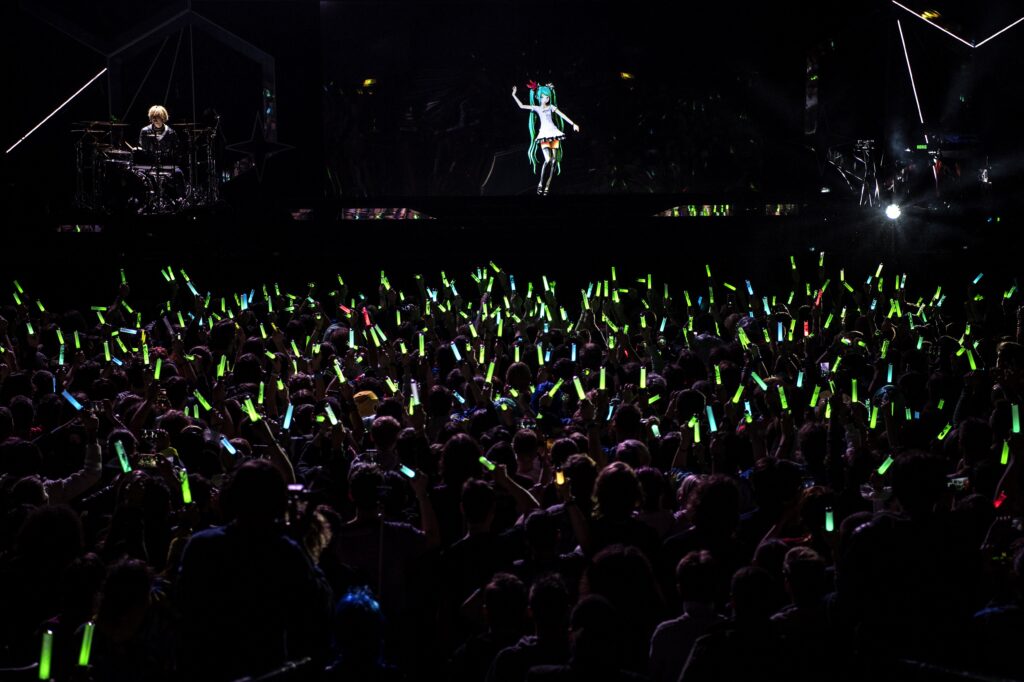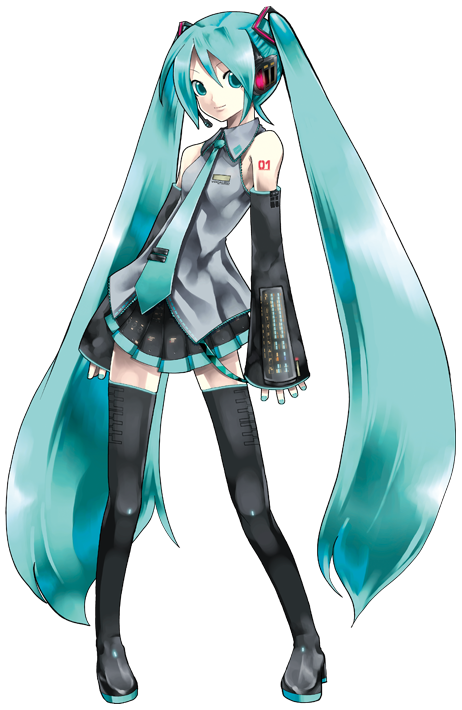CHIBA: Hatsune Miku has always been 16 years old and worn long aqua ponytails. She is Japan’s most famous Vocaloid — a computer-synthesized singing voice software that, in her case, comes with a virtual avatar.
Legions of fans are celebrating the 16th anniversary of Miku’s Aug. 31, 2007, release with events including a virtual exhibition and songwriting to showcase her standard high-pitched, cutesy voice. For sale are a special Seiko watch and a series of dolls in the character’s likeness.
The Vocaloid’s hits have been widely shared online, including on Miku’s own official YouTube channel, which has drawn 2.5 million subscribers. She has CDs and DVDs out and video games focused on fun rhythms co-produced with Sega, as well as cosmetic products plastered with her name and famous manga artists drawing portraits of her for T-shirts.
On Friday, thousands of people packed a concert hall in a Tokyo suburb to watch their virtual idol dance and sing while accompanied by human musicians.
The audience bobbed colorful light sticks in time to the music, with some people dressed like the doe-eyed Miku.
As laser beams flashed about, the cheering crowd, who knew the songs and the choreographed moves by heart, performed them in unison. A human-size hologram of Miku was projected at the center of a dark stage as though she was really there.
“I love the way her voice doesn’t sound human,” Koyo Mikami, 16, said while attending the event at Makuhari Messe Convention Center with a friend. Both boys wore kimonos featuring large images of Miku.
Miku’s voice was synthesized based on the voice of Saki Fujita, a human singer, actor and voice actor.

The Vocaloid software application works on both Windows and Mac computers by taking inputs of melody and Japanese language lyrics and outputting the music with Miku as the vocalist. Edits like adding vibrato are as easy as double-clicking. Although various versions are available, the latest official Crypton package sells for 16,500 yen ($110).
Miku is 158 centimeters tall (5-foot-2) and weighs 42 kilograms (93 pounds), is perpetually 16 years old, and favors songs with tempos between 70 and 150 beats per minute, according to Crypton.
Whether being 16 makes a technology outdated or a classic is up to the beholder. While Hatsune Miku, whose name translates to “first note from the future,” pioneered a genre, many other Vocaloids are now on the market.
The technology has advanced since Miku’s early days, with all kinds of voices and features available.
The voice synthesizer software has been featured in more than 100,000 songs, performed in 3D concerts in Los Angeles and Hong Kong, and inspired countless works of art.
Hatsune Miku owes her reign as the “It Girl” of the digital era to the participatory nature of Japan’s manga, animation and pop music culture, according to Benjamin Boas, author of “From Cool Japan to Your Japan.”

Instead of strictly guarding their intellectual property, publishers and other copyright holders encourage fan participation, he said.
Unlike Mickey Mouse, Super Mario and other copyright-protected characters, Hatsune Miku was offered as open-source software, with a Creative Commons license in the West that allows people to more freely use and distribute the content they make with the software.
“Miku’s success was always about the fan community and the ability for fans to become all Miku’s producers at once,” said Boas, whom the Japanese government named as the country’s Cool Japan Ambassador, a symbolic honor.
“As long as that community is alive, I see a future for Miku.”
Creators who make music with Vocaloids are called “Vocalo-P” in Japan, with the “p” standing for “producer.” Some have gone on to become superstars in Japan, including the duo Yoasobi and singer Kenshi Yonezu.
People are also having fun with various voices for Vocaloids. Among the recent performances shared with a frenzy online is an AI version of Frank Sinatra doing a rendition of “YMCA,” a 1978 hit by the Village People, never performed on record by the legendary crooner.
Hiroyuki Itoh, chief executive of Crypton Future Media, which developed Hatsune Miku and is based in the northern Japanese city of Sapporo, said creating a character to go with the voice software was part of making the program user-friendly.
“We wanted to make it easy to use for amateurs who want to make music as a hobby,” he said. “Some people can’t sing very well, and here you have a 16-year-old girl singing your song.”
There are no plans to end Miku’s perpetual adolescence or to age her beyond 16.
“We will do our best as a company to make sure Hatsune Miku will continue to be loved by the people,” Itoh said.
AP
